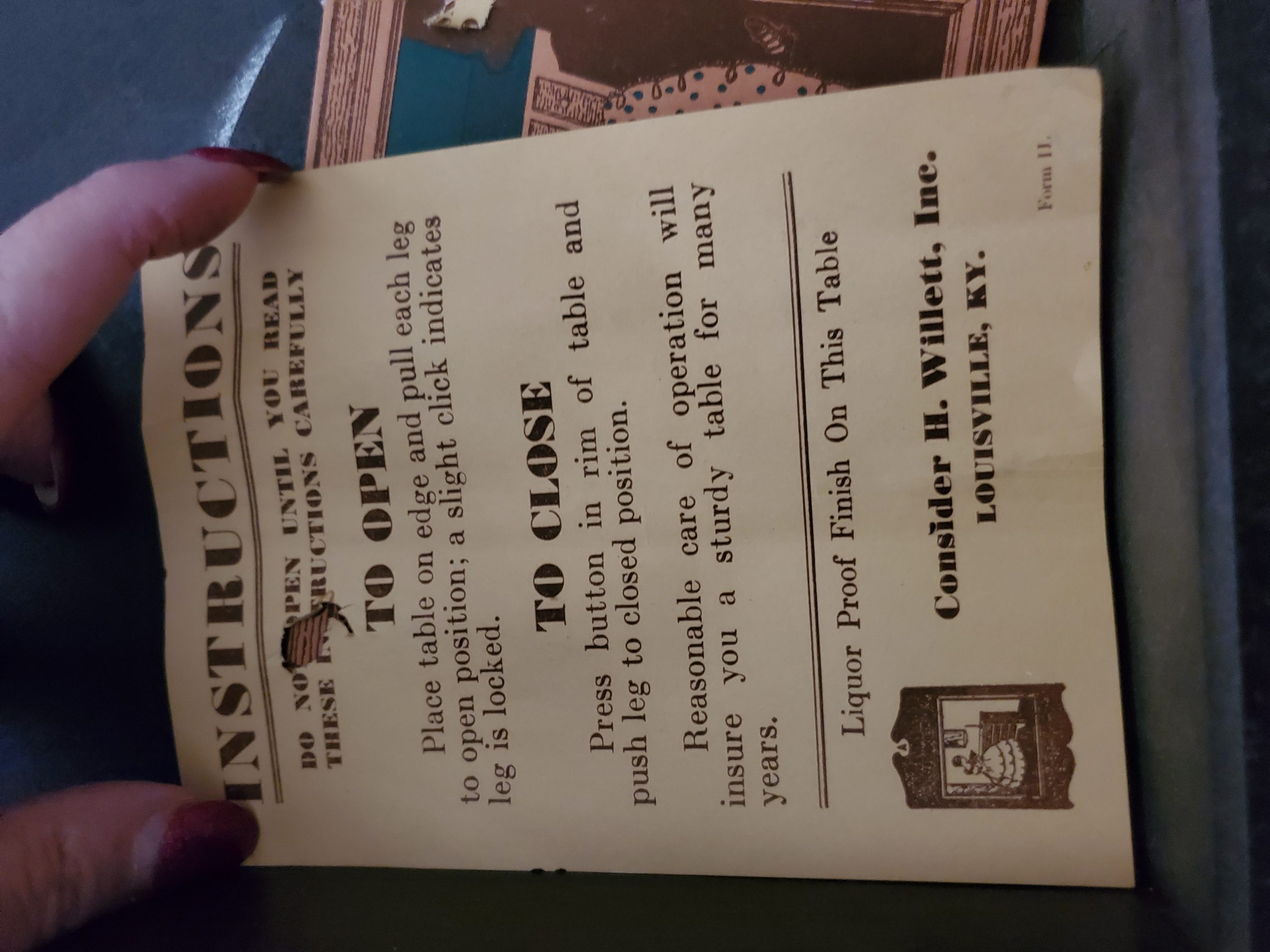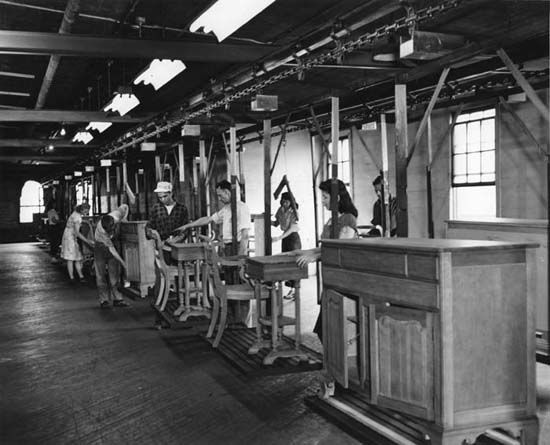


A Little Willett History
I am indebted to Charles Hudson of Nicholasville, Kentucky, who has provided some details about the history of the Willett Furniture company in Kentucky, based on clippings from Louisville Courier-Journal Newspapers during the era.
From the August 8, 1947 issue:
Consider H. Willett and his brother W.R Willett were in the lumber business when in 1934 Consider H. founded the Willett Furniture Co. They were at the time of this writing the largest maker of cherry and maple furniture in the US. the article gives a profit for the year 1946 of 2,600,000. dollars.
Many years before the business was founded they made and sold handmade furniture.
By 1947 standards, this would have been a very successful company in terms of size, earnings, and profit.
In 1949 they bought a plant in New Albany, Ind. for the manufacture of Kitchen cabinets. These were done in birch. Charles says he has only talked to one person who had these. and he doubts if there are very many left intact. Apparently, the kitchen cabinet business was less successful than the furniture business.
Charles indicates to me that the firm got into serious financial difficulty in about 1960, and between 1960 and 1964 the company changed hands in an effort to save the firm.
Assets of the Willett firm were auctioned in June 1964 and the firm ceased operation at that time. Charles indicates that the furniture manufacturing equipment was simply sold off to bidders at the auction and that the detailed production drawings for each furniture piece were also auctioned off. He believes that the drawings ended up in the hands of a furniture manufacturer somewhere in the Eastern United States, but so far as anyone knows, no other manufacturer has attempted to continue to produce any of the pieces.
At least as of the year 2000, the old Willett factory is still standing. It is on the corner of 30th and Kentucky in Louisville, The Willett name was still legible on the side of the brick.
Charles also says… The tag that came on our buffet says that it is “My Old Kentucky Home” group. This is the one with all the roped legs and turns on the sides. The 1948 book lists three groupings of Cherry: ‘My Old Kentucky Home’,(Dining Room);’Sallie Ward Group’ (Living Room ), and ‘The Kentuckiana Group’ ( Bed Room) The Maple is not named in groupings. In the dining room grouping, there are four styles of chairs.
I suspect what brought Willett down was a combination of several factors–like many family-run businesses there might not have been another generation committed to keeping the business operational and as the company changed hands, new owners may not have fully appreciated what was involved. Though manufactured, the furniture pieces required careful craftsmanship with lots of skilled handwork by what must have been becoming a very well-paid work-force.
Perhaps The careful craftsmanship, materials & finish became less and less competitive price-wise with cheaper furniture constructed less carefully (often in other countries with cheaper labor costs) and of lesser materials, and this could have led to a decline in sales. Finally, by the late 50s, the trend was definitely away from heavy dark traditional furniture, as many people were tossing traditional furniture in favor of simple new contemporary designs with blonde finishes. Time-wise, the early 60s was certainly a low point in interest in traditional furniture with a lot of detail. Somehow, the attempts to contemporize the furniture by eliminating details never quite worked with customers (see photos of Transitional and the somewhat oriental-looking Trans-East line, below). The company still really wanted to make traditional furniture like they had in the past. The late designs came off as neither traditional nor contemporary, but someplace in between. Perhaps the pieces were too modern looking for the traditional buyers, but not contemporary enough for those who were purchasing new furniture in the late 50s and early 60s.
Another clue is that the ads for Willett furniture that are showing up at auction are almost always from the late 50s, as the BH&G ad introducing the Transitional line. I think this says something. Previously the traditional furniture may have been so popular that the company’s major problem probably was keeping up with the demand, especially given the complicated multi-step finishing process that required skilled labor. Word of mouth worked better than any print advertising campaign. By the late 50s, sales of the traditional pieces were declining–hence all the new almost contemporary designs that appeared in the late 50s. But the company also found it necessary to advertise in national magazines in an effort to boost sales– something they had hardly done in the 40s and early 50s
I had the following note from Margaret Willett Ernest, a relative of Consider H. Willett. ====================================================
From the book, “Abraham Willett of Onondaga County, New York” by Albert James Willett, Jr., on p. 212: “The Willett Furniture Company was eventually sold out of the family, but continued under the Willett name until at least 1959. It went out of business in the 1960s.”
Earlier, on the same page, the author said that it was a going concern in 1941. Consider Heath Willett, Jr. died in 1944.
Sincerely,
Margaret Willett Ernest

